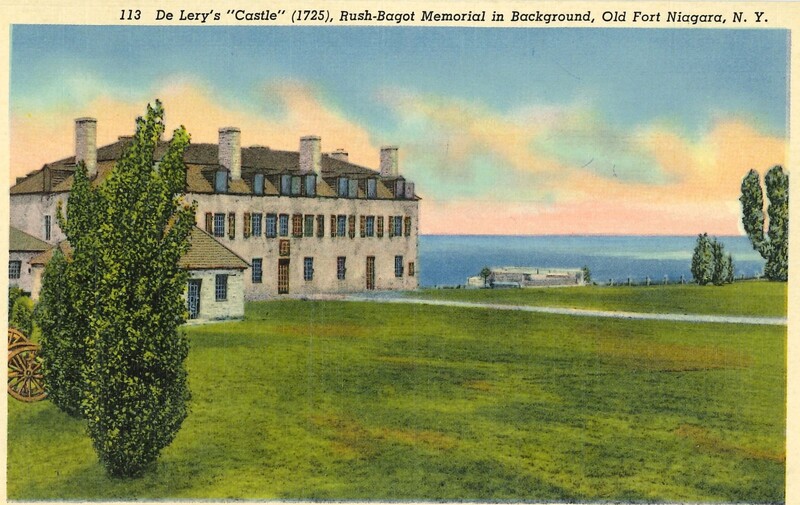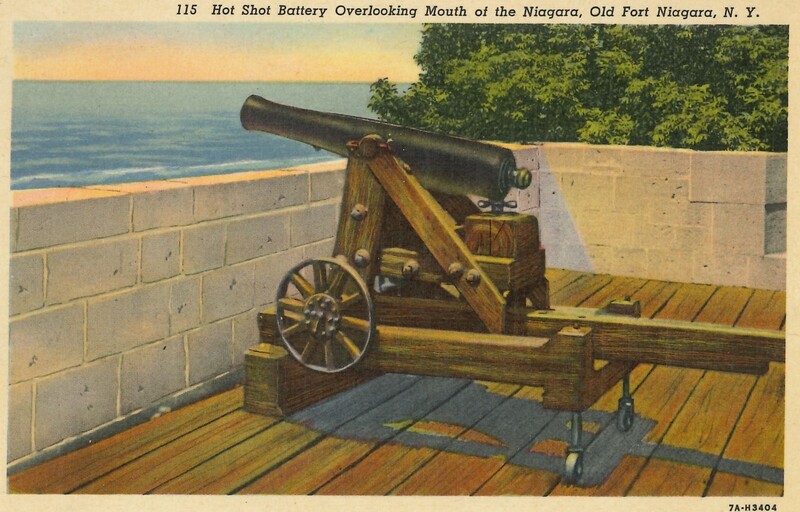Fort Niagara
Fort Niagara is the oldest fort on the Niagara frontier. It is located in Youngstown, New York, at the mouth of the Niagara River. A post was first established here by the French in 1679, known as Fort Conti. It was short-lived and was replaced by Fort Denonville in 1687. A more permanent structure was built by the French in 1726 and is known as the French Castle. Ownership of the fort has changed several times throughout its history. It was captured by the British in 1759 during the French and Indian War and remained in British hands throughout the American Revolution. The British were forced to give up the fort as part of the terms of the 1783 Treaty of Paris, which ended the American Revolution. Jay's Treaty in 1794 confirmed this arrangement and the British relinquished the fort to the Americans in 1796.
The fort was used as a military base by the Americans during the War of 1812. When the Americans attacked Fort George on May 25, 1813, their offensive was partially conducted from Fort Niagara. After taking possession of Fort George on May 27, 1813, the Americans began to rebuild their newly acquired Fort. They would remain here until December of 1813, when they retreated back across the Niagara River. Before they left, they needlessly burned the town of Newark (Niagara-on-the-Lake). The British quickly took possession of Fort George and planned an attack on Fort Niagara. On December 19, 1813, the British captured Fort Niagara in a surprise bayonet attack. They proceeded to burn all the settlements between Lewiston and Buffalo in retaliation for the burning of Newark.
The British recognized the precarious position they were in and were anxious to fortify their defences. A letter by Lieut.-Col. Bruyeres in March of 1814 notes that "as it is possible the enemy may soon be prepared to endeavor to regain possession of Fort Niagara, and to carry on offensive operations on the whole of that Frontier, I am most particularly commanded by His Excellency Sir George Prevost to direct that you will use every exertion in your power to strengthen the Works of that Fort in as efficious and expeditious a manner as possible to resist whatever efforts may be made against the position..."
Fort Niagara remained in British possession for the remainder of the war, but the terms of the Treaty of Ghent, which ended the war, stipulated that pre-war boundaries be reinstated. The British once again relinquished the fort to the Americans and it has remained in their possession since then. It was used as a barracks and training station for American soldiers during World War I and World War II. In 1963 the army presence was removed from the site but the U.S. Coast Guard remains. The fort was restored between 1929 and 1934 and is open to the public.


